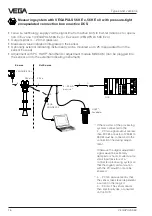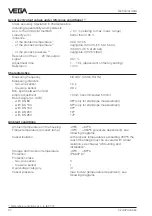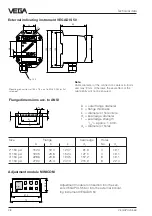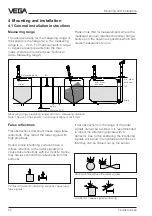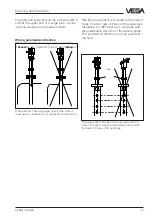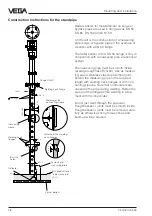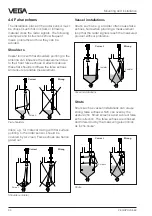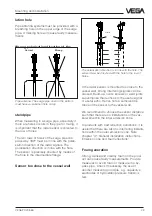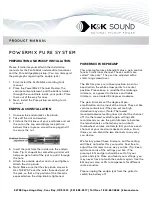
30
VEGAPULS 56K
,,
,,
,,
,,
,,
,,
,,
,,
,,
,,
,,
,,
,,
,,
,,
,,
,,
,,
,,
Measuring range (operating range) and max. measuring distance
Note: The use of the sensors in solid applications is restricted.
full
Meas. range
max. meas. distance 20␣ m
4 Mounting and installation
4.1 General installation instructions
Measuring range
The reference pane for the measuring range of
the sensors is the flange face. The measuring
range is 0␣ …␣ 20␣ m. For measurements in surge
or bypass pipes (pipe antenna) the max.
meas. distance is reduced (see "Technical
data - Measuring range“).
Please note that for measurements where the
measured product reaches the sensor flange,
build-up on the antenna is possible which can
cause measurement errors.
Reference pane
empty
Profiles with smooth interfering surfaces cause large
false signals
Round profiles diffuse the radar signals
A deflector causes signal scattering
Mounting and installation
False reflections
Flat obstructions and struts cause large false
reflections. They reflect the radar signal with
high amplitude.
Round profile interfering surfaces have a
diffuse reflection of the radar signals and
cause false reflections with low density. Hence
they are less critical than reflections from flat
surfaces.
If flat obstructions in the range of the radar
signals cannot be avoided, it is recommended
to reflect the interfering signals with a
deflector. Due to this scattering the interfering
signals will be low in amplitude and diffuse so
that they can be filtered out by the sensor.
min.
meas.
distance
min.
min. meas.
distance
min. meas.
distance
full
empty

